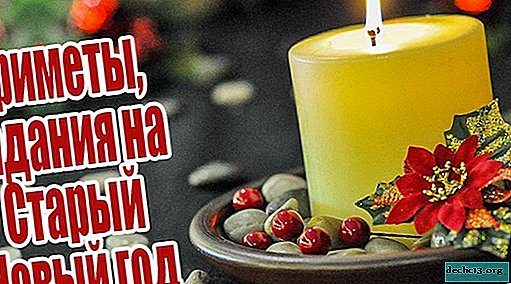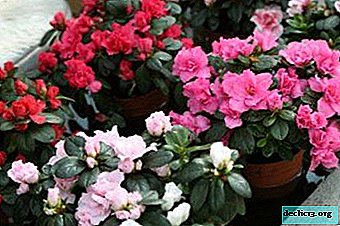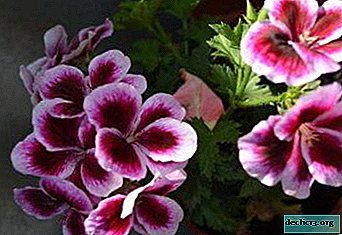Meet the beautiful and unpretentious houseplant Balda Gymnocalycium
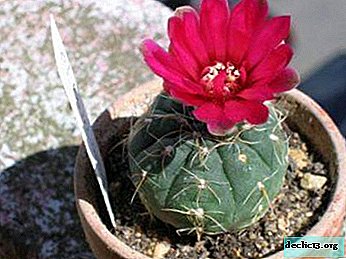
Among the variety of indoor plants, cacti do not occupy the first places. However, some connoisseurs prefer similar plants, replacing them with other types of greenery.
Someone highlights the beneficial properties of a cactus, others choose thorns as a flower that does not require special care.
In this article we will consider this type of cactus, its description. You will learn how to properly care for and reproduce at home, as well as what common pests and diseases can affect the plant.
Botanical Description
Gymnocalycium Balda - a spherical cactus, originally from Argentina, where it grows at an altitude of 500 to 2000 meters above sea level. The second name is “Baldanium”.
Gymnocalycium baldianum is a representative of the genus of succulent plants of the Cactaceae family.Features
- The stem of the plant has a diameter of up to 13 cm, a spherical shape. Color - green with a bluish tint.
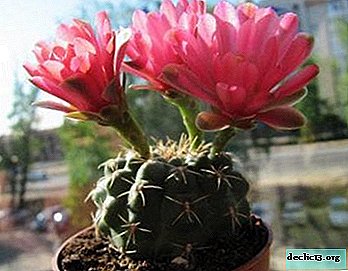 The ribs are wide, divided into tubercles by deep grooves, from 9 to 10 in number.
The ribs are wide, divided into tubercles by deep grooves, from 9 to 10 in number.- The areoles are immersed deep in the cactus stem.
- Radial spines are straight, thin, 5-7 pieces in size, light brown, with a red tint at the base.
- Flowers, 3-4 cm in diameter, appear at the top of the cactus, and bloom widely in the sun, usually have a red color, sometimes pink, white or orange. Six lobes of the stigma of the pestle and specks of dust are yellow, stamens are purple.
- The ripened fruit is long, green, has vertical cracks below.
The difference from other species of this flower is that its flower tubes are completely bare, without hairs and bristles, covered with smooth scales.
How to care at home?
- Lighting. The plant loves light and warmth. However, direct hot rays of the sun leave spots on the stem, like burns.
- Temperature. At home, the temperature is not demanding. In summer, the plant is recommended to be kept at temperatures up to 30 ° C, and in winter - about 15 ° C.
- Humidity. The plant does not like excess moisture. Overfilling can lead to loss of roots. In summer, a regular supply of water is necessary, since this is a period of growth and flowering, by autumn the amount of water is gradually reduced, and in winter it is minimized.Humidity is not a very important indicator for a cactus. However, periodic spraying will benefit the plant; moreover, the dust should be washed off from time to time, especially after waking up from sleep.
- Fertilizer. Fertilizing a cactus is possible and necessary, however, in moderation, not more than once a month, an excess of fertilizer in the soil is detrimental to the flower. In the autumn and winter, cacti do not fertilize.
As a fertilizer, it is better to alternate organic and mineral top dressing, observing the frequency and minimum concentration. Fertilizers must have a low level of acidity, as well as soil.
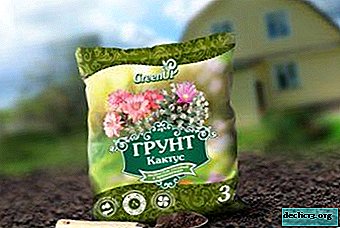 Priming. The soil should be light and loose, and also have a low level of acidity. To obtain such a substrate, the following components are suitable:
Priming. The soil should be light and loose, and also have a low level of acidity. To obtain such a substrate, the following components are suitable:- Sheet earth.
- Peat.
- Baking powder (sand, charcoal, vermiculite, expanded clay).
- Transfer. Transplantation to the plant is rarely required, while the cactus is young - once a year, then - as needed.
- Wintering dry and cool at around 10 ° C. High humidity during the rest period is unacceptable.
- Pot. The root system of the Gymnocalicium must feel the volume of the pot, therefore, in an excessively spacious vessel, the plant may begin to hurt. Shallow pots of cylindrical shape or low bowls are most suitable.
- Pruning. If the cactus is long enough, it can be cut from the crown, if not, remove it from the ground and cut off the top of the cactus (6-8 cm).
- Turn the cut to the shape of a sharpened pencil. Dry it for a week. Do not think that a cactus cannot survive without soil and water. If you did everything correctly, then the pointed part will become almost flush with the original edges of the cut.
- Now cactus can be planted in a substrate. Pour drainage into the pot, on top - soil for cacti, and then a small layer of sand.
- Screw the plant into the center.
- Moisturize the soil regularly and wait for rooting.
Breeding
The reproduction of bald hymnocalicium occurs mainly by seeds, since this species rarely branches, but there are other ways.
- Seed propagation is a fairly simple procedure. In addition, the offspring obtained from the seed is better and healthier. From sowing to germination 3-4 weeks. Flowering can begin in the second year of the plant's life. The substrate for sowing is the same as for adult plants. Before sowing, it is recommended to calcine the soil in the oven for the purpose of disinfection.
It is important that after sowing, the substrate does not dry out, for this the pot is covered with a transparent lid. Favorable temperature for germination of 20 ° C. You can sow seeds at any time of the year, subject to sufficient light and ambient temperature.
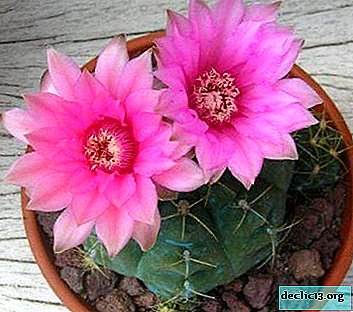 In the event of the appearance of a lateral process of the Gymnocalicium, which does not have its own roots, it must be carefully separated. The separated shoot can be left in a dry place for a day or two, after which, placed in a moist substrate.
In the event of the appearance of a lateral process of the Gymnocalicium, which does not have its own roots, it must be carefully separated. The separated shoot can be left in a dry place for a day or two, after which, placed in a moist substrate.Further care is like an ordinary plant. Roots are formed quite quickly. It is better to make such a transplant in spring or early summer, during the growth period. If the lateral process has its roots, which are intertwined with the root system of the mother plant, then the separation operation is better combined with transplantation of the entire plant in order to accurately untangle the roots.
Diseases and Pests
With proper care, the plant is rarely exposed to diseases and pests.
- Red tick - The most harmful pest of cacti, but it does not often affect the Bald Gymnocalycium. Obviously due to the thick skin that is difficult to pierce. Nevertheless, sometimes settles on a plant.
It is difficult to notice small parasites with the naked eye, more often - traces of their wrecking, dried up rusty spots on the cactus epithelium are found. To combat arthropods, it is recommended to wash the stem with hot water or grease with a solution of ethyl alcohol.
- Worms - small insects, the females of which settle on the roots and stems of plants, and in the literal sense of the word, suck juices from them. It is not difficult to determine their presence on the stems - the pink bodies of the parasites are covered with a white web. It is more difficult if the worm is wound up in the roots.
A signal of concern may be stunted growth or lack of flowers. At the slightest suspicion, the roots should be carefully examined.
To combat the parasite, root baths with constant hot water temperature or long-term washing are recommended, as well as the use of insecticidal and universal preparations in the form of solutions or granular additives in the substrate.
- Root rot most often occurs due to erroneous care: excessive watering, especially in the cool season or too “oily” substrate.
If the process of decay affects only the roots, which is usually found only when transplanting a suspiciously non-blooming or non-growing specimen, it is recommended to wash the roots with hot water, cut to healthy tissue, disinfect (with crushed charcoal, fungicidal preparations, alcohol), dry and leave to root.
Similar flowers
All these plants have similar recommendations for maintenance and care:
- stapelia;
- portulacaria;
- conophytum;
- tavaresia;
- acanthoripsalis.
If you are an avid flower grower, or just love indoor plants, be sure to decorate your collection with this flowering handsome. Gymnocalycium Balda - unusually beautiful, unpretentious cactusthat will become a small gem among your greenery.

 The ribs are wide, divided into tubercles by deep grooves, from 9 to 10 in number.
The ribs are wide, divided into tubercles by deep grooves, from 9 to 10 in number. Priming. The soil should be light and loose, and also have a low level of acidity. To obtain such a substrate, the following components are suitable:
Priming. The soil should be light and loose, and also have a low level of acidity. To obtain such a substrate, the following components are suitable: In the event of the appearance of a lateral process of the Gymnocalicium, which does not have its own roots, it must be carefully separated. The separated shoot can be left in a dry place for a day or two, after which, placed in a moist substrate.
In the event of the appearance of a lateral process of the Gymnocalicium, which does not have its own roots, it must be carefully separated. The separated shoot can be left in a dry place for a day or two, after which, placed in a moist substrate.



